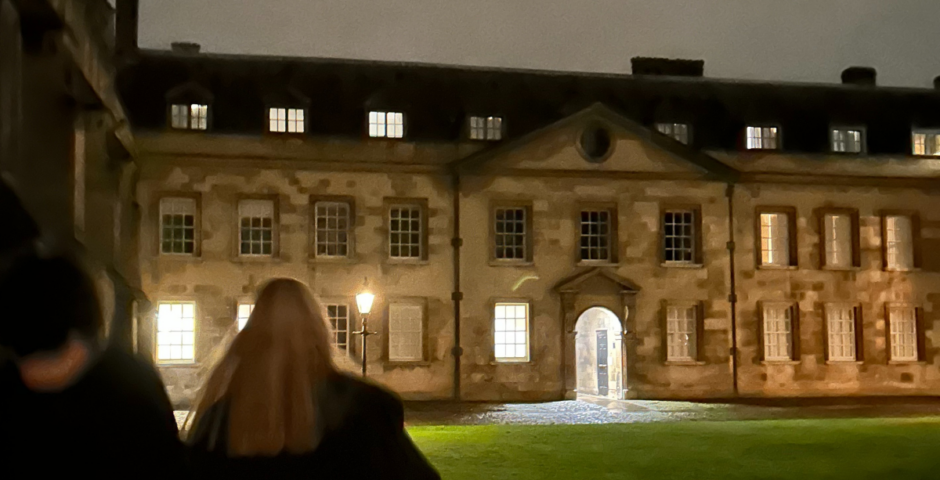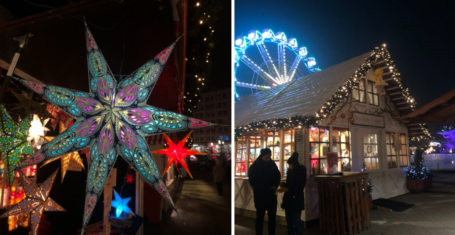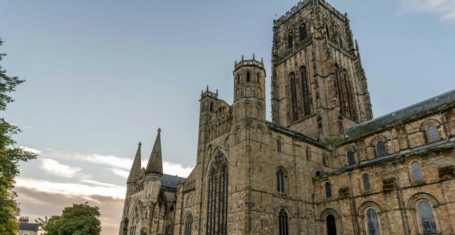
The Cambridge Chapel Eurovision: Peterhouse
The quest to attend every college evensong in one year
If I’ve learned anything from a year of attending evensongs and then trying to rank them in articles, it’s that you can’t really rank them. You can try, of course, in that same way that one might try to rank all of the individual colleges. The real truth is, each has its own charm, its own distinct appeal and its own unique mood.
To assign numbers to them feels reductive, like trying to enumerate something distinctively unquantifiable. My old system of stars quickly blurred into a sea of fours and fives, because each service always offered something new, different and exclusive worth appreciating.
So, I have reached the conclusion that I will start my evensong quest from the beginning, a do-over if you will, in a slightly altered format. A pilgrimage, nae: A Eurovision-style Grand Tour of College Evensongs. Picture it—one slightly over-stressed Cambridge student making her way from chapel to chapel, armed with a notebook, an incredibly untrustworthy sense of direction, and a rotating cast of guest-star companions.
And where better to start this extravaganza of incense, cassocks, and key changes than the oldest college in Cambridge: Peterhouse.
‘A spur-of-the-moment spiritual adventure’
The decision to attend Peterhouse’s Wednesday evensong was made, as all great pilgrimages are, in a moment of spontaneity. It was one of those evenings when the dark descends at 6 p.m. and you begin to ponder completing tomorrow’s supo work—until you remember that evensong exists precisely to make those silly thoughts go away.
Most Read
By 6:20pm, I was tearing down King’s Parade like a contestant in The Amazing Race: Anglican Edition, hat and coat flapping dramatically in the wind, clutching my phone, speed walking in a way only Cambridge could have taught me to do.
My companion, nae, guest star for the evening was the radiant Bianca Pacciani, former member of Magdalene Choir and an all-round brilliant friend. She had graciously agreed to accompany me on this, the inaugural leg of the tour—and, more importantly, consented to appear in the photos.
Lost, as per usual
We began as all good pilgrimages do: by immediately getting lost.
I would like to make it known that we did, in fact, pass a very clear sign that read “Peterhouse Chapel”, right outside the door. We even took a photo of it. And then, like the biblical Israelites, we wandered aimlessly in the desert that was the Peterhouse courtyard, searching for the chapel entrance as if it were the promised land. Ah, yes, Cambridge students strike again.
Eventually, salvation came in the form of Phoebe Clayton, a member of the choir who came to our rescue, guiding us to the chapel door and ushering us inside. A godsend, indeed.
An excellent welcome and even better kneelers
Peterhouse Chapel is, in a word, charming. In three words: Small and delightful. It has an intimate and almost jewellery-box-like feeling to it. Where other chapels might feel like you’re attending evensong inside a cathedral (cough, Kings, cough), Peterhouse feels like being invited into an old country estate’s generational church they keep, ‘on the grounds’. Despite the implications of this metaphor, I’ve never felt more welcomed entering a college chapel!
The chaplain greeted us with the warmth of someone genuinely pleased you came, which, in the world of religion, is not always guaranteed. The students at the door were very friendly, the atmosphere was unpretentious, and the entire place radiated a pleasant, quiet devotion.
Not to mention the embroidered cushions in the stalls and the really top-quality kneelers, the unsung heroes of Anglican endurance. These particular specimens were lush, low down, and provided ample padding for all one’s penitential needs. A rare and much-appreciated find.
Seating mix-up: Averted
In a typical display of overconfidence, I led us straight to the choir stalls. It wasn’t until a student subtly informed me that I may have to audition for Peterhouse choir before entering the reserved seats that I realised my mistake.
Thankfully, disaster was averted, and we were placed safely among the congregation, where my off-key enthusiasm could do minimal damage. (More on this later.) As we settled in, the organist began to play, and the music filled the chapel with that specific blend of melancholy and grandeur that I feel is so unique to organs. It reminded me of home, though I couldn’t say why. Perhaps it’s because evensong always manages to make one nostalgic for something.
The choir takes the stage
When the choir processed in with all the composure of seasoned professionals, cassocks swishing in perfect unison, I couldn’t keep the impressed smile off my face. Their robes were a lovely shade of deep burgundy, rich, elegant, and frankly, a fashion statement. With their white surplices and cassocks (there you go, some proper terms included), they all looked the embodiment of ecclesiastical chic.
I’m not exaggerating when I say: 10 out of 10 for choir aesthetic. If I ever do implement a Eurovision-style scoring system, Peterhouse thus far would win “Best Overall Impression” by a landslide.
A compact masterpiece
The service was short, well-paced, and beautifully structured. Nothing lingered beyond its welcome, yet nothing felt hurried either. It managed that elusive balance between maintaining the ceremony of an evensong and keeping a forward-moving momentum, something that is rare to encounter and quite the feat to achieve.
The Magnificat (Watson in E) was my undisputed highlight. From my spot just above the choir, it was a particular pleasure. There’s something doubly enjoyable about hearing the music beneath you, and due to the small space and proximity to the choir, you could really hear the different voice parts weaving together. It’s a perspective that makes you appreciate the precise architecture of choral music itself. I must also add how refreshing it was to see women in the choir; this gave the music a textural difference that I don’t usually get to experience in the day-to-day.
The readings were handled by students, which I always think adds something special. There’s a kind of uplifting authenticity in hearing someone around your own age in the college chapel.
A hymn catastrophe (and a heroic recovery)
And then came the hymn. Now, I must confess, I am not what one would call “a singer.” I am, however, what one might call “enthusiastic.” A dangerous combination.
Bianca, the choral angel that she is, sang beautifully, clearly, confidently and (rather importantly) on key. I, meanwhile, was lost after the first verse, wrestling with the hymn book, having somehow misheard the hymn number and starting with the entirely wrong words. Bianca, to her credit, maintained her composure and sang beautifully. I, meanwhile, stumbled through with the tone of someone attempting to impersonate an organ pipe. I take this opportunity to offer my formal apologies to anyone within a three-pew radius.

The ‘New English Hymnal’ haunts my dreams and my waking hours. Mission Praise any day.
On atmosphere (and why it matters)
What I enjoyed most about Peterhouse evensong wasn’t the music, or the robes, or even the plush kneelers—it was the atmosphere.
There were perhaps seven people in attendance, maybe even fewer. But every single one seemed present in the truest sense. There was no furtive glancing at phones for the time, or a general vibe of unwillingness, just a refreshing attentiveness, like everyone had agreed to suspend the chaos of Cambridge life for forty minutes and to actually be present.
Peterhouse, with its stained-glass windows, candles and altar, doesn’t resemble the minimalist, Lutheran church of my childhood. Yet somehow it achieved the same sense of peace I felt there. Maybe even more so. That’s not something I can say I always feel in every Cambridge chapel or church.
Post-evensong reflections
After the service, the chaplain lingered to chat with attendees, and the choir members laughed together outside. There was an unmistakable image of family about the scene.
I realised, standing there outside the Peterhouse chapel, that this was exactly what I wanted from this tour. Not grandeur or rankings or pageantry (well, maybe a little pageantry). But connection. To people, to faith, to music, to these amazing buildings, to the things that make evensong such a compelling tradition.
I’ll be back, Peterhouse—if only to redeem my hymn-singing reputation.
Until then, on to the next chapel. Let the choral games begin.























